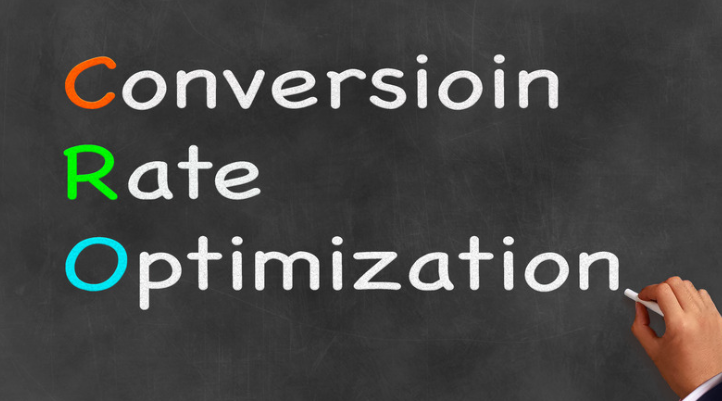Picture this: a bustling digital storefront where every click could mean cash in the register. That’s your website, and with Conversion Rate Optimization (CRO), it’s not just wishful thinking—it’s reality. We’re talking turning browsers into buyers, lookers into leads.
Today I’m peeling back the curtain on how to transform site visitors into paying customers without needing more foot traffic. CRO is like a secret sauce for your online presence; get it right, and watch those numbers climb.
Conversion Rate Optimization: Turning Visitors into Paying Customers
You’ll learn strategies that tweak what you’ve already got to work harder for you—no need for an overhaul when smart adjustments can do wonders. By diving deep with A/B testing and revamping user experience, we’re going big on conversions.
Catch these insights because by article’s end, boosting your bottom line will seem less mystery and more mastery.
What is Conversion Rate Optimization (CRO)?

Think of your website as a busy downtown storefront. Just like you’d tweak the window display to get more people inside, CRO fine-tunes your site to turn those digital window-shoppers into buyers. It’s all about making sure that when folks land on your page, they find exactly what they’re looking for—and fast.
A stellar conversion rate doesn’t just happen; it’s the result of a strategic design and clear value propositions speaking directly to your target audience. With effective CRO strategies in play, every aspect of user experience from landing pages to checkout flows gets polished until visitors can’t help but take action.
The Process of Increasing Leads Through CRO
To pump up those leads, imagine taking apart each step a visitor takes and asking yourself: “Could this be smoother?” Content enhancements here might mean nailing that headline so it hits home with potential customers or ensuring forms ask for an email address without scaring folks away with too many fields. Workflow improvements could involve streamlining navigation paths so users glide right toward that free trial or signup button without second-guessing their choices.
Research shows fewer form fields can lead to better engagement, which makes sense because no one likes homework—especially when shopping online. So trim down excess steps wherever possible because time is money and patience is thin on the internet highway.
Distinction Between CRO and SEO
CRO zeroes in on convincing site visitors who’ve already made it through the door thanks to search engine optimization (SEO) efforts. While SEO focuses on boosting website traffic by climbing up search rankings—a bit like putting out eye-catching signs to attract passersby—CRO ensures once these visitors arrive, they stick around long enough to become paying customers.
This isn’t just tossing things at the wall and seeing what sticks; A/B testing helps pinpoint what works best. But remember: while both aim ultimately at increasing sales, SEO casts a wide net whereas CRO hones in on reeling them in close enough for you start improving their customer journey right there on your turf.
Key Takeaway:
Think of CRO as your website’s storefront magic, tweaking and polishing every user experience until visitors can’t resist buying. It’s about crafting a seamless path from landing pages to checkout, ensuring each step is smooth enough to lead folks straight to that purchase button.
To boost leads with CRO, it’s like fine-tuning an engine—cut the clutter in forms and navigation paths. Remember, simplicity speeds up shopping; no one wants a complex journey when they’re eager to buy.
CRO is the art of conversion once SEO gets them through the door. It’s not guesswork but strategic testing that turns browsers into buyers while keeping their online shopping spree swift and satisfying.
The Importance of User Experience in CRO
Ever tried to pour soup with a fork? That’s what poor user experience (UX) on a website feels like. Conversion Rate Optimization (CRO) isn’t just about the numbers; it’s about making sure your site visitors don’t feel like they’re trying to eat soup with a fork. By crafting a seamless customer journey, you can turn those just-looking browsers into eager-to-buy customers.
Analyzing Behavior to Encourage Specific Actions
To nudge site visitors toward desired actions, we need to get into their heads. Understanding user behavior is crucial for effective conversion strategies because each page offers unique opportunities for optimization. For instance, did you know that conversions aren’t limited to checkout pages? Yep, any touchpoint could be ‘the one’—from the landing page down to that last-minute upsell pop-up before they wave goodbye.
Digging deep into analytics gives us the dirt on what makes our audience tick and click. We use this intel not only to A/B test our way out of every potential bottleneck but also tailor content enhancements and workflow improvements directly impacting lead generation efforts—a high five from me if your sign-up form doesn’t ask for my great-grandmother’s maiden name.
Crafting Variations for Maximum Impact
Say hello to variations—your new best friends in the quest for higher engagement rates and fewer digital tumbleweeds rolling across your dashboard stats. Creating impactful versions of web elements resonates with users more than generic one-size-fits-all solutions ever will.
If your calls-to-action were people at a party, would they be wallflowers or life-of-the-party types? Your CTAs should scream “Click me.” so loud that ignoring them feels almost rude—and when done right, expect better engagement faster than you can say “optimized landing pages.” Remember folks: In CRO land, subtle as an elephant rarely wins races.
Key Takeaway:
Think of your website like a party where every element invites visitors to dance, not just stand around. By understanding user behavior and creating tailored content, you can transform casual browsers into committed buyers without making them feel like they’re wrestling with soup and a fork.
Leveraging A/B Testing for Enhanced Conversions

Imagine two paths in the woods, both lead to a treasure chest. But one is quick and easy while the other’s long and filled with obstacles. In the world of digital marketing, A/B testing helps you find that first path, ensuring your site visitors don’t bounce off like rubber balls before they hit ‘buy’.
Crafting Variations for Maximum Impact
You’ve got a hunch that changing your signup button from grey to green will turn more browsers into buyers? Test it out. That’s what split testing’s all about—pinning element against element on your website to see which performs better. You’re not just throwing spaghetti at the wall; you’re conducting controlled experiments where only one ingredient changes at a time.
A case study shared by Crazy Egg reveals how impactful these tests can be when done right—a slight variation could dramatically shift user behavior. And improving conversion rates isn’t rocket science; sometimes it’s as simple as tweaking an email field or adjusting some text next to your free trial offer.
We’re talking substantial gains here: effective A/B tests are proven game-changers in enhancing website performance metrics. They let you optimize conversions based on actual data rather than gut feelings—and who wouldn’t want their decisions backed up by cold hard numbers?
The trick lies in crafting variations that resonate with your audience—think about them like flavors of ice cream. Vanilla might bring steady sales but imagine if mint chocolate chip suddenly doubled those figures? Identifying what clicks requires methodical analysis and creativity—it’s why CRO focuses so intently on details most would overlook but can significantly boost conversions.
Optimizing Landing Pages as a Key Strategy in CRO

Your landing page is the VIP room of your website; it’s where you want every visitor to end up. Think of it as your digital storefront: if the window display doesn’t grab attention, people just walk on by. So let’s talk about sprucing up that display to turn heads and open wallets.
Enhancing Calls-to-Action for Better Engagement
A call-to-action (CTA) isn’t just a button or line of text—it’s like the charming salesperson who can make customers feel they need what you’re selling. And guess what? Your CTAs could be working harder for you. A compelling CTA is clear, persuasive, and impossible to ignore.
To get there, test different versions—maybe ‘Get Started’ outperforms ‘Sign Up’, or perhaps red buttons are more click-worthy than blue ones according to field data analysis. It’s all about finding that sweet spot where visitors can’t help but take action.
You’ll learn here how optimizing these nuggets of engagement encourages visitors not only to stick around but also happily pull out their credit cards. Because when your CTAs shine brighter than Times Square billboards, even night owls won’t miss them—and better engagement means a healthier bottom line for RevUp Now.
The goal? Transform site visitors into paying customers with landing pages that don’t just look good—they perform like Olympic athletes under pressure—a/b testing ensures this by pitting potential champs against each other in pursuit of gold-medal conversion rates as split testing champions would suggest.
Last tidbit: Don’t clutter your prizefighters’ ring with too many distractions; keep messages crystal-clear and focus on converting those website visits into measurable results—that’s what good conversion rate optimization process does best.
Using Analytics to Drive Conversion Decisions

You’ve got traffic flowing to your site, but are you making the most of it? Let’s say your website is a party and Google Analytics is the savvy host who tells you which guests are digging the vibe. By analyzing organic traffic patterns and spotting those qualified leads, you’re one step closer to turning up the volume on conversions.
Digging into analytics helps highlight what works and what doesn’t. Think about that signup button—does it get more clicks on Tuesdays? Maybe folks love signing up for free trials after reading an insightful blog post. These aren’t just random facts; they’re actionable insights.
Analyzing Behavior to Encourage Specific Actions
The trick isn’t just getting people visited—it’s about understanding their moves once they hit your page. Are they bouncing like a bad DJ at a club or sticking around for an encore? Use this intel from user behavior studies to encourage visitors towards actions that scream ‘I want in.’. It could be as simple as tweaking your email address field or nudging them with live chat support when they hesitate before checkout.
And here’s where things get interesting: sometimes less is more—even when we’re talking forms. According to data-driven wisdom, slashing fields can skyrocket form completions because nobody wants homework while shopping online.
Crafting Variations for Maximum Impact
A/B testing isn’t just buzzword bingo; it’s science-backed match-making between site elements and customer preferences—a digital marketing Cupid if you will. Creating variations lets us play mixologist with our content, finding out which cocktail encourages visitors down the conversion funnel smoother than a Friday night espresso martini.
Sure, A/B tests take time, but patience pays off with improved site performance metrics that make CRO experts do cartwheels (figuratively speaking). And thanks Hotjar case studies show by using such targeted tactics has helped businesses not only catch attention but keep it long enough to convert lookers into bookers—or should I say buyers?
Key Takeaway:
Google Analytics is your party insider, pointing out which guests are ready to dance. Use it to find what clicks with visitors and tweak your site for more signups.
Watch how users groove on your page; use those insights to make their experience smoother. Sometimes, cutting form fields makes them more likely to commit.
A/B testing mixes up content like a good cocktail, finding the sweet spot that turns casual browsers into eager buyers. Patience here can lead to big wins.
Case Studies Demonstrating Successful Conversion Strategies
If you’re looking to boost online sales conversion, the proof is in the pudding—or should we say, the case studies. Let’s talk about real businesses that have turned their websites into lean, mean, converting machines.
The Tale of A/B Testing Triumph
Imagine two roads in a forest: one beaten path and another less traveled. A company faced this fork with their website elements and decided on rigorous A/B testing to find out which road led to Rome—figuratively speaking. They crafted variations of web pages like an artist tweaks a masterpiece until they struck gold—a layout that saw conversions skyrocketing as if by magic.
This isn’t fantasy; it’s what Crazy Egg reports are possible through diligent split testing. And boy does it pay off. With significant improvements not just guessed at but proven by data-driven decisions.
Landing Page Lore: Less Is More
Sometimes the hero of our story isn’t who adds more flair—it’s who simplifies for impact. One e-commerce site took this advice to heart when they optimized their landing pages. Their message became clearer than a crystal ball; “Sign up now.” called out from every page corner with an allure hard to resist.
Accordingly, visitor engagement didn’t just improve—it soared higher than dragons (okay, last fairy tale reference). But don’t take my word for it; Zuko’s insights show us, reducing form fields can indeed enhance calls-to-action effectiveness and convert visitors into loyal customers better than any spell could.
Rewriting The Retargeting Narrative
In another realm (also known as digital marketing), retargeting has emerged not as an old wizard but rather as a knight in shining armor reclaiming lost conversions across cyberspace battlefields—and winning back hearts along the way.
Campaigns specifically designed for re-engagement wielded such power that potential customers couldn’t help but give these sites another glance—and often another purchase too. This strategy doesn’t need ancient runes or cryptic scrolls either; modern-day wizards at Moosend provide plenty of evidence (like so.) showing how retargeting leads previously interested folks right back where they belong: your customer list.
Key Takeaway:
Real-world success stories show that A/B testing can lead to a major boost in conversions, proving the power of data over guesswork.
Simplifying your landing page could be the magic trick you need; clear calls-to-action have been shown to significantly lift engagement and sales.
Retargeting isn’t just marketing lore—it’s a proven knight in shining armor for winning back wandering website visitors and turning them into loyal customers.
Mobile Optimization’s Role in Improving Conversion Rates

If your website takes ages to load on mobile, kiss those potential customers goodbye. But get the speed right and watch as they stick around, turning browsing into buying. It’s a no-brainer that smooth sailing on smartphones means more sales—after all, who hasn’t done some impromptu shopping while waiting in line for coffee?
We’re living in the era of thumbs scrolling faster than eyes can blink. So if you want to boost conversions, making sure your site is easy to navigate on a phone screen isn’t just smart—it’s essential. Think about it: when was the last time you pinched and zoomed? Probably feels like trying to read a newspaper with binoculars—frustrating and fruitless.
Responsive design is not just about looking pretty; it’s like having an ace up your sleeve for keeping users engaged longer. Remember how much we love instant gratification? That applies here too because faster load times are sweet music to our easily distracted ears (or should I say eyes?). You’ve got mere seconds before someone decides whether sticking around is worth their precious time.
Analyzing Mobile Conversions
Digging into analytics might feel less thrilling than binge-watching your favorite series but trust me, it’s where the gold lies for ramping up those conversion rates (just ask Hotjar). We’re talking actionable insights here—not just numbers and charts—to make every pixel count towards persuading visitors down that funnel.
And let’s be real; nobody wants a price quote or free trial sign-up process that requires endless swiping or typing out War & Peace on tiny keyboards—we need big buttons, minimal steps (Zuko gets this). Every tap matters when you’re aiming for optimal mobile experiences which are crucial cogs in improving site performance overall.
Key Takeaway:
Speedy mobile sites win sales; slow ones lose them. Make sure your site loads fast and is easy to use on phones, or watch potential buyers bounce. Big buttons and simple sign-ups are key for converting those quick-thumb browsers into customers.
Implementing Retargeting Techniques to Reclaim Lost Conversions

You know that feeling when a customer almost makes a purchase but then bails at the last minute? It’s like watching a home run turn into a foul ball. But don’t sweat it; retargeting is here to help you coax those visitors back into your digital storefront.
Analyzing User Interaction for Effective Retargeting Campaigns
Retargeting isn’t just about bombarding former site visitors with ads—it’s an art form. Think of it as reminding someone they forgot their umbrella on a rainy day: subtle, helpful, and timely. By examining how users previously interacted with your website, you can tailor campaigns that resonate personally and remind them what they’re missing out on.
Did they hover over that signup button or linger on the pricing page? These actions give clues about where in the conversion funnel they slipped away. With this insight, craft messages for re-engagement that speak directly to their previous interests—making sure every ad feels like part of an ongoing conversation rather than random noise.
Craft Messaging That Hits Home
The trick is not just to get seen again but also remembered—and fondly so. Your message should be more inviting than grandma’s house on Thanksgiving Day. When retouching base with potential customers who showed initial interest according to retargeting campaign stats, charm them by highlighting new features or offering exclusive deals since their last visit.
To maximize impact without annoying anyone (because let’s face it—that would defeat the purpose), test different approaches using A/B testing methods detailed by experts such as Crazy Egg’s guide. See if changing up ad design or tweaking call-to-action phrases gets more clicks from those elusive almost-customers.
In short, remember: You’ve got another shot at making first impressions count twice.
Key Takeaway:
Retargeting isn’t just ads; it’s a reminder service. Use clues from user behavior to craft personalized messages that make them feel missed, not spammed.
Be as welcoming as a holiday dinner when messaging potential customers—highlight new perks and sweeten the deal with exclusives they haven’t seen yet.
To avoid being a nuisance, A/B test your retargeting efforts. Fine-tune until you get those almost-customers back in the game—and this time, seal the deal.
Integrating Social Proof To Boost Trust And Conversions
Social proof is the digital version of a standing ovation. When website visitors see others raving about your product, they’re more likely to jump on board. Think of testimonials and reviews as your site’s cheerleaders, waving pom-poms that spell out ‘trust’.
User-generated content isn’t just fluff; it’s like having coffee with a friend who can’t stop talking about this amazing new gadget they got—suddenly you want one too. It taps into the power of word-of-mouth marketing right there on your webpage. And let’s be real, seeing someone gush over something in their own words hits differently than any polished ad ever could.
Testimonials: The Powerhouse of Persuasion
Ever landed on a page and been greeted by quotes from folks who’ve already taken the plunge? That’s no accident. These snippets are conversion gold mines—they show that people not only bought what you’re selling but also liked it enough to give praise publicly. Plus, when potential customers read these accolades alongside options for free trials or signup buttons, clicking feels like joining an exclusive club.
Add to that user-generated videos or photos showing off how they used your product and bam—you’ve got yourself some compelling content that turns fence-sitters into buyers.
Leveraging Reviews For Credibility
No matter how good your marketing game is, nothing beats honest feedback from those who have gone before. Displaying ratings gives immediate insight into public opinion—it’s like taking a peek at report cards where A’s mean ‘add to cart’. With each positive review adding another layer of trustworthiness, it becomes easier for site visitors to convert without second-guessing.
A collection of well-placed reviews near pricing details or email address fields can nudge viewers toward taking action because if many have said yes at full price, why shouldn’t they?
Key Takeaway:
Turn browsers into buyers with social proof. Testimonials and reviews are like personal recommendations, making folks eager to join the fan club.
Show off user-generated content—it’s real talk that outshines slick ads, nudging visitors toward that ‘buy now’ button.
Honest ratings near buy buttons work like trusty report cards—an A+ in customer satisfaction can tip scales in your favor.
FAQs in Relation to Conversion Rate Optimization: Turning Visitors Into Paying Customers
How do you convert visitors into paying customers?
To turn browsers into buyers, hone your site’s user experience, nail your value prop, and keep testing different approaches.
What is the conversion rate from visitors to customers?
The conversion rate measures how many site visitors become customers—think percentages; higher numbers mean better performance.
What is conversion rate to paying customer?
This stat tells you the slice of folks who visit your site and then actually pull out their wallets.
What are the 6 primary elements of conversion rate optimization?
Six CRO must-haves: compelling content, intuitive design, solid SEO, snappy load times, mobile-friendliness, and clear calls-to-action.
Conclusion
Master Conversion Rate Optimization: Turning Visitors into Paying Customers and you’ll master your market. Remember, CRO isn’t just about tweaking a page—it’s about understanding hearts and clicks, a vital part of improving website performance and site’s conversion rate.
Analyze behavior, optimize experiences, test boldly. These actions lead to the seamless customer journeys that convert browsers to buyers, ultimately helping to optimize website performance and enhance the overall marketing strategy.
Leverage analytics; let numbers narrate the story of what works. This is how smart sites evolve into sales powerhouses. The process of improving website performance is closely tied to understanding and interpreting the analytics, ensuring that your marketing strategy is data-driven.
Focus on mobile optimization too because phones are where eyes are at these days. And don’t forget retargeting—those almost-customers can still be yours with the right nudge. Mobile optimization is a key element in improving website performance, catering to the growing mobile audience, and retargeting plays a crucial role in optimizing the site’s conversion rate.
Social proof seals the deal; it builds trust like nothing else does. Use it well and watch conversion rates soar. Incorporating social proof is an effective strategy to improve the site’s conversion rate and overall marketing strategy. It not only builds trust but also provides the necessary credibility to turn potential customers into paying ones.
